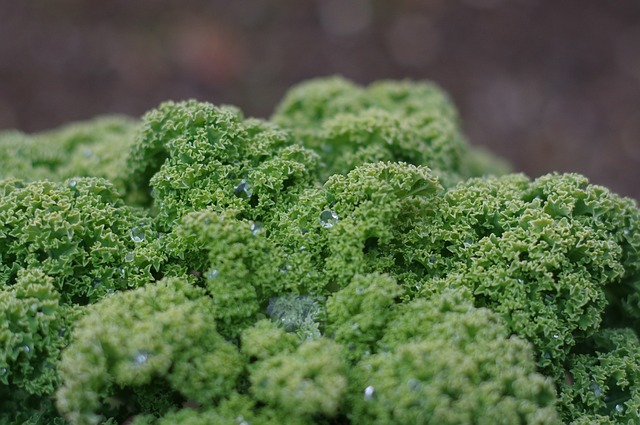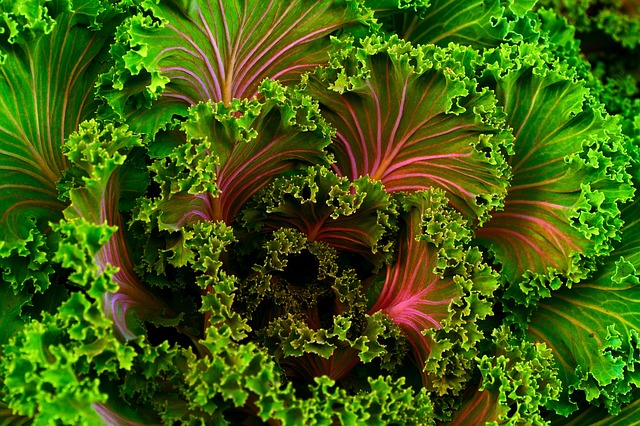When I was young and foolish, the only thing I knew about kale was that it was dark green, somewhat tough, and was used by caterers as a garnish bed for other, tastier things.
Now I know it as a top-notch food, medicine, animal supplement, and survival crop.
Kale, when prepared well, is delicious. Sautéed, it’s mildly sweet, slightly bitter, and has an earthiness that just feels healthy. Steamed, it’s a little less exciting but, in a pinch, kale will work in any recipe containing spinach, collards, mustard, or other boiled/steamed greens. I pick leaves for salads, put them in smoothies, nibble them as I stroll through the garden, cook them with bacon and eggs for breakfast—and try to force-feed them to my toddler.
You May Also Enjoy:
Roughly 2,400 years ago, Hippocrates wrote, “Let food be thy medicine and medicine be thy food.” I’ve got a gut suspicion he was thinking about kale when he wrote that—or at least one of its ancient ancestors in the Brassica family. There are reports of kale helping reverse the progression of Multiple Sclerosis, lower cholesterol, improve eyesight, and fight cancer.
Kale is believed to contain the most nutrition per calorie of any known plant.
If you’re concerned about staying healthy during a downturn, think kale. One cup, chopped, contains 206% of the daily value of vitamin A, 134% of your needed vitamin C, 684% of your vitamin K needs, plus decent amounts of calcium, manganese, copper, and a wide variety of other nutrients, antioxidants, and cancer-fighting compounds.
If there was one green that was a “must-grow”—this is it.
Another area where kale shines is as an animal feed, particularly for chickens. Are your hens looking lackluster? Egg yolks a bit pale? Load them up with kale. When keeping chickens, I grow kale and throw handfuls of leaves over the fence as often as I remember—the birds wolf them down and look for more. After I started feeding kale regularly some years ago, the yolks of my hens’ eggs darkened to a rich orange. I compared our eggs with typical store-bought eggs and the color difference was remarkable. Why? Our eggs are observably richer in nutrients. Deep colors = more nutrition. I credit kale for that, and for the good growth of the chicks we raised.
If you raise goats or pigs, it’s not a bad idea to grow some kale for them, as well. The nutrition that heals us also nourishes our livestock. I’m a big fan of preventative maintenance—don’t wait until your animals are ill, listless, or producing poorly to get them off commercial feed. Give them nutrient-dense feed like kale to help them thrive.

How to Grow Kale
Now let’s get into the “how-to” of growing kale. Kale is a cool-season biennial that’s among the easiest of garden plants. It thrives on double-dug beds, even in sand, and can produce for easily half the year, or more. Plant kale in fall or early spring, taking care not to bury the tiny seeds too deep. One kale plant (depending on variety) can grow a couple of feet tall and spread to the same extent. I over-seed, then eat what I thin out. Give them enough water when they’re little, and they’ll reward you with plenty of growth. I’m not a fan of pre-starting and then planting out. From my observations, direct-seeded plants are a lot tougher than ones grown indoors or on a porch, then put in the garden. Unlike tomatoes and other warm-season crops, kale isn’t particularly phased by late frosts. You can plant it in spring a month or so before the last frost date and it will usually come through.
In the Deep South, kale grows all the way through the winter; further north, growth may slow or stop, but kale is rarely killed, even by being buried in snow. In fact, the taste gets even sweeter after a frost. If you’re a gourmet, consider growing the attractive and mild-flavored “Lacinato” or “Dinosaur” kale. It’s a mild cultivar from Italy that can handle cold into the teens without dying. If you live further north and fear your temps will be below 10°F (or even below 0°F), get “Siberian” kale. For fresh food in the depth of winter, kale is rivaled only by Jerusalem artichokes, turnips, and a few other hardy survivors. Even carrots will turn to mush before kale gives up.
You May Also Enjoy: “How to Find and Eat Jerusalem Artichoke—Fall’s Wild Food”
The only time it’s hard to grow kale is during a hot summer. High temperatures are kale’s enemy. If you have hot summers, grow it under grape trellises or taller crops to protect it from the worst of the sun’s heat. Of course, even if your kale does give up, it’s going to be at a time when you’re likely to have plenty of other warm-season veggies to enjoy.
If you’re planning a year-round supply of healthy edibles, kale is a reliable bridge between the first frost of autumn and the last frost of spring. Don’t go without it—and next time you see a spread of hors d’oeuvres on a bed of deep green, skip the breaded cocktail weiners and eat the kale. Your health will thank you, even if the hostess looks at you sideways.
David The Good is a Grow Network Change Maker, a gardening expert, and the author of five books you can find on Amazon: Compost Everything: The Good Guide to Extreme Composting, Grow or Die: The Good Guide to Survival Gardening, Totally Crazy Easy Florida Gardening, Create Your Own Florida Food Forest, and Push the Zone: The Good Guide to Growing Tropical Plants Beyond the Tropics. Find fresh gardening inspiration at his website TheSurvivalGardener.com and be sure to follow his popular YouTube channel.








COMMENTS(3)
I LOVE kale and was so excited to read here that kale is good for chickens too! I hated kale as a child ; it was so rubbery. BUT grow your own organic kale…… go outside and pick it right before dinner, cook lightly and you will fall in love with it. I can’t eat enough! I think if someone wants to try their hand at gardening, kale is the PERFECT starter crop. Try it!
What variety of Kale is shown in the first picture of his post??
The lacinato/dino kale I planted last fall is STILL hanging in there! Two of my plants laughed at our 100-degree Texas summer and, here at the end of October, are still providing nutrition for our salads and smoothies. In past years they’ve hung on through much of summer, but these two have been a pleasant surprise.